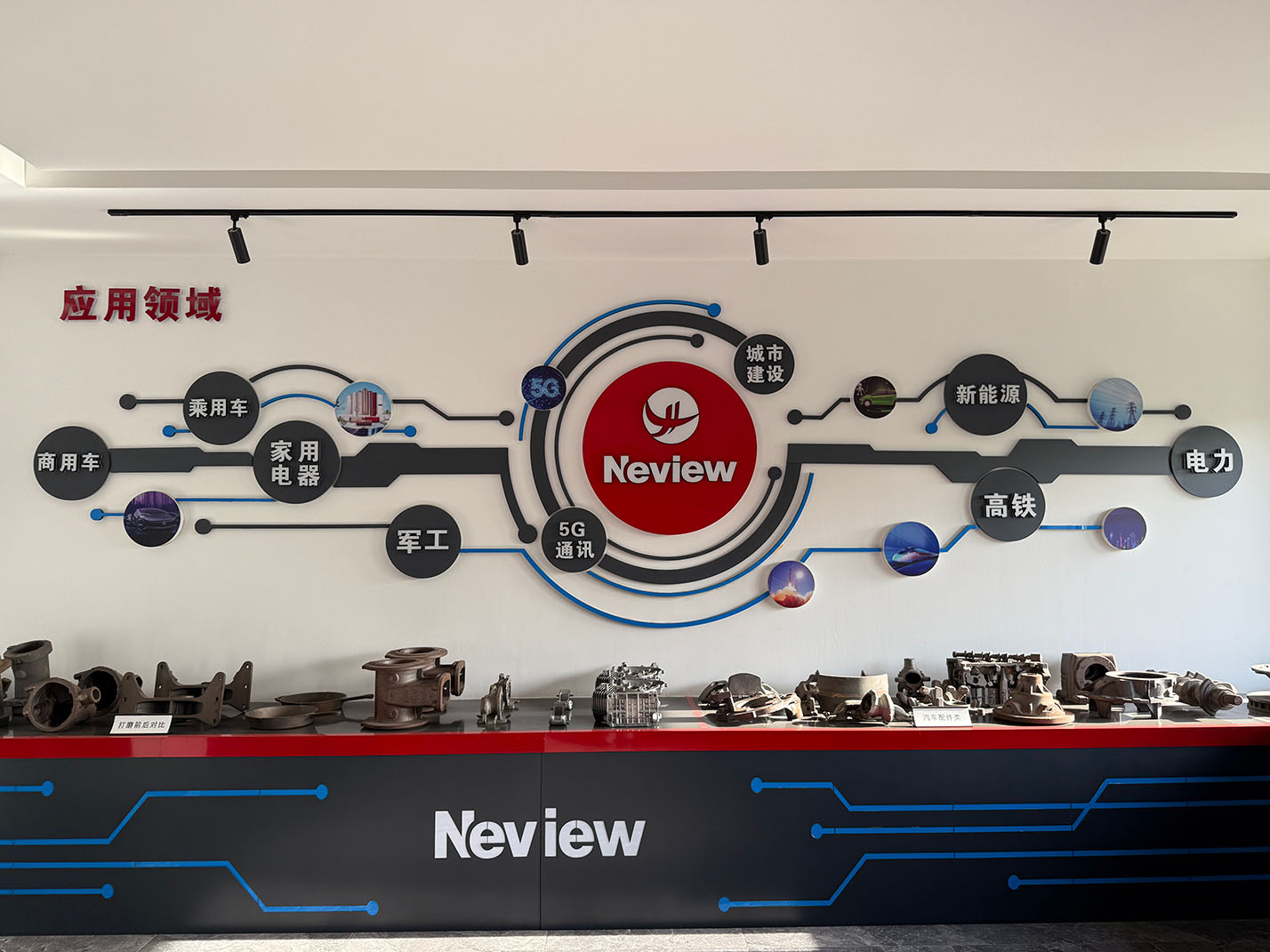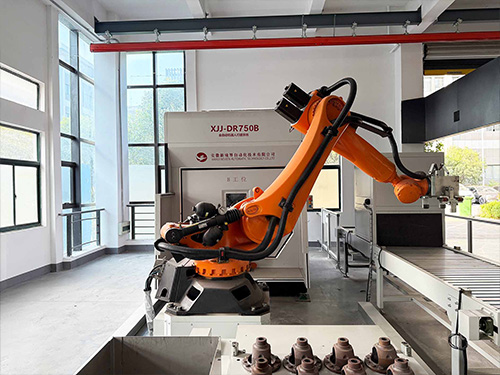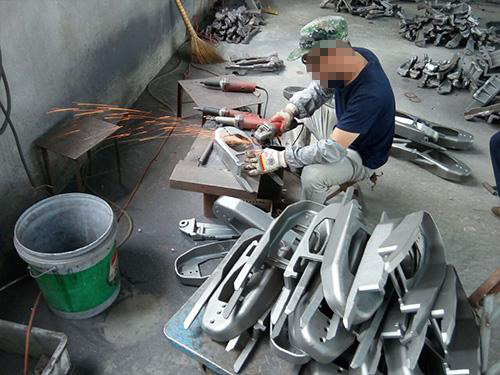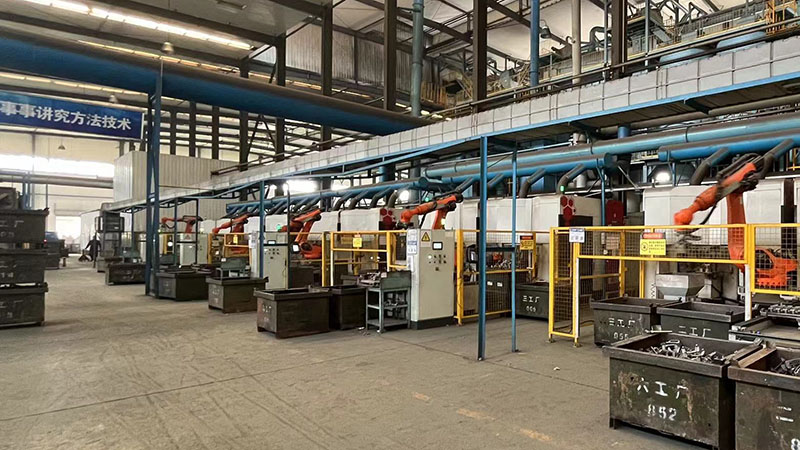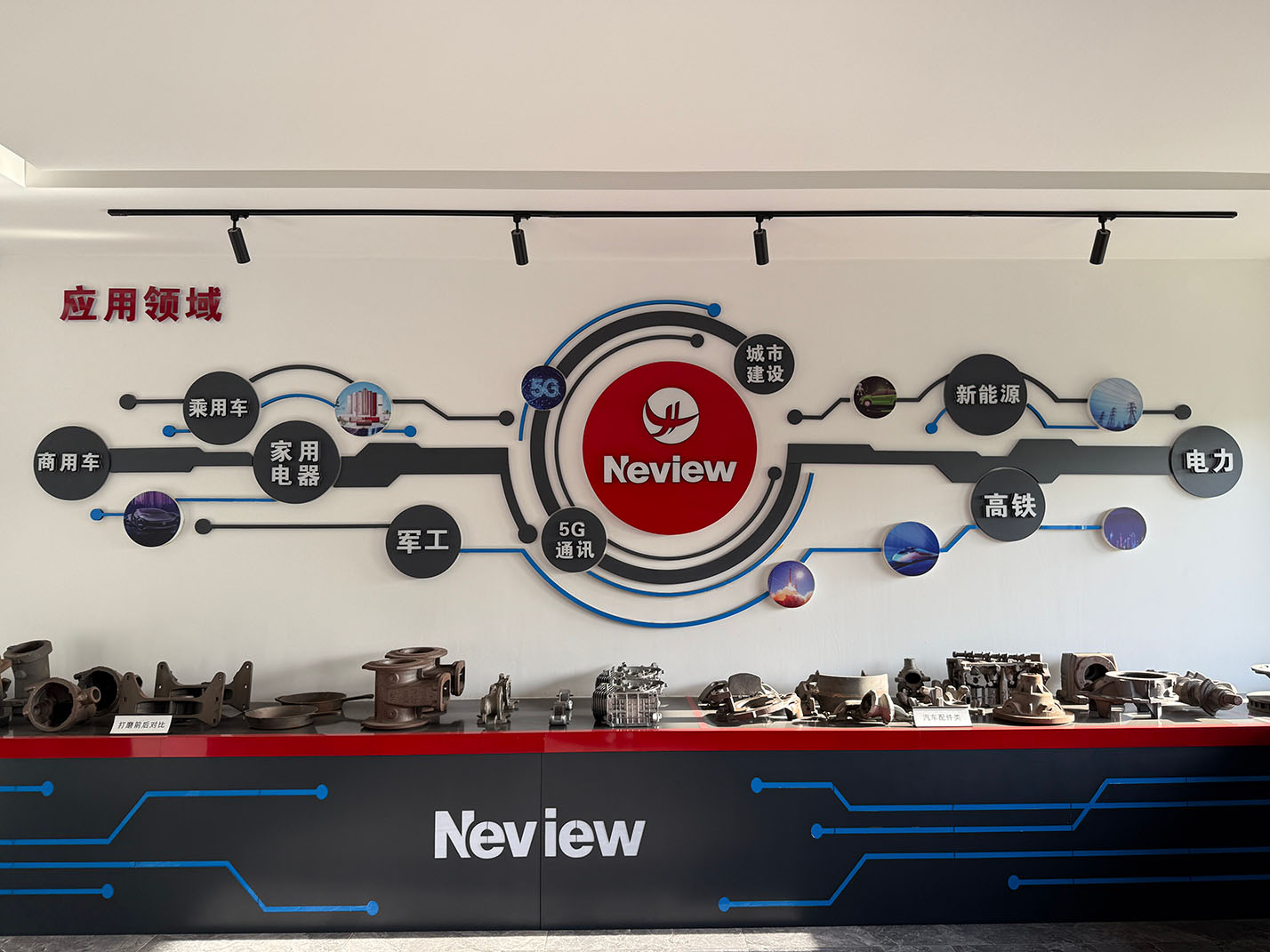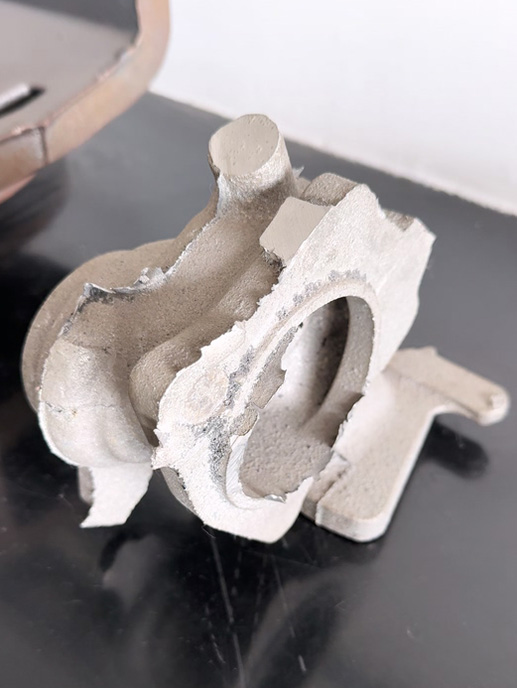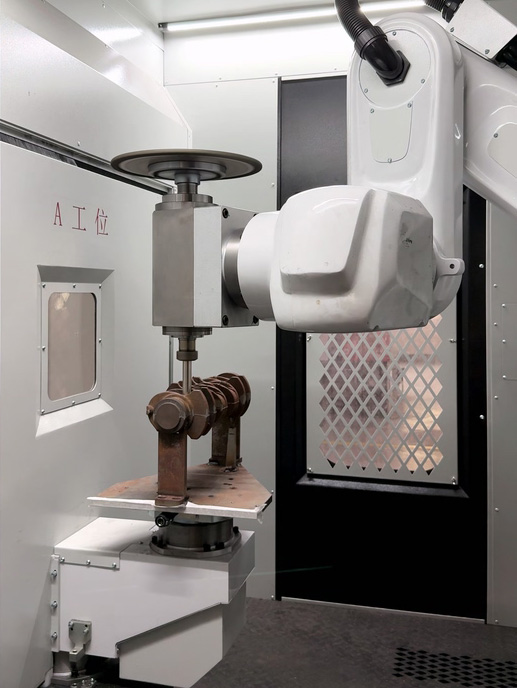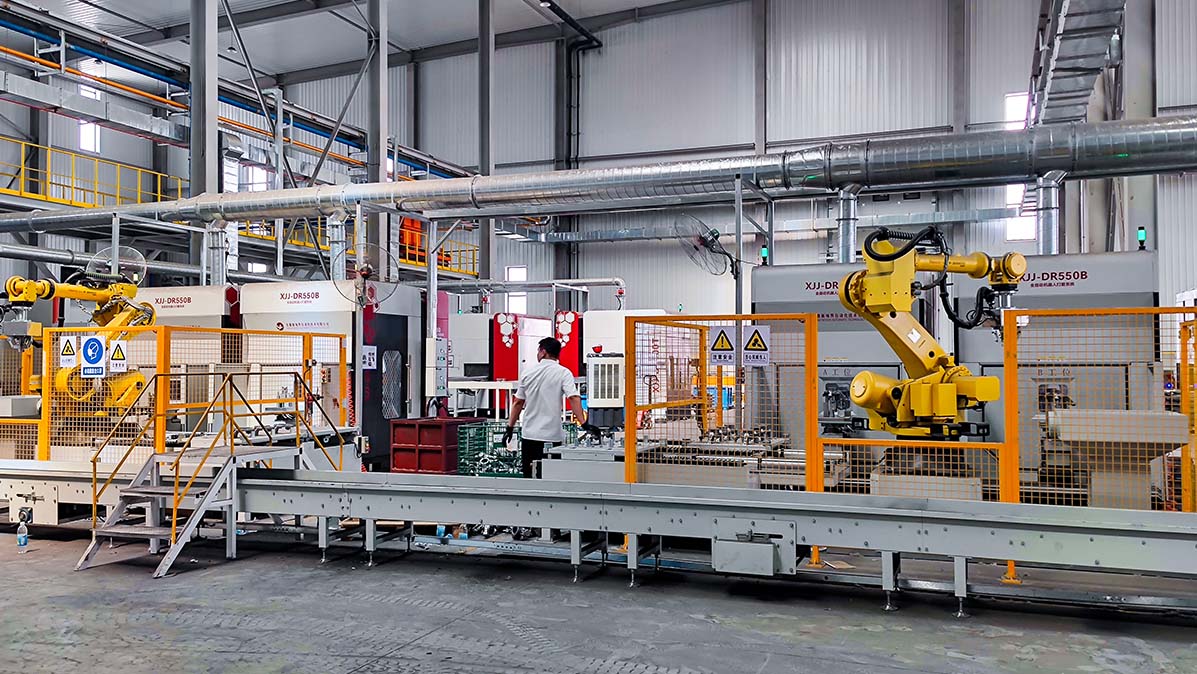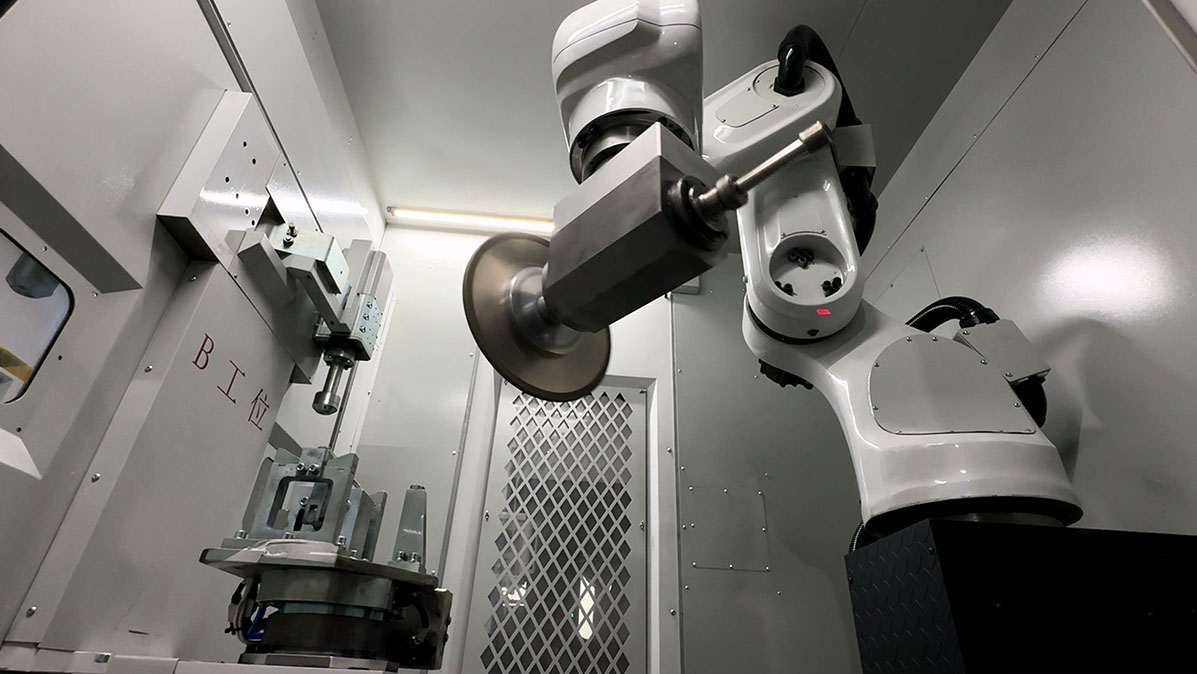Aug 02, 2025
مع التحسين المستمر لمستوى الذكاء في قطاع التصنيع، أصبحت تقنية الطحن الآلي في مرحلة ما بعد المعالجة للصبّات توجهًا رئيسيًا للارتقاء التكنولوجي في شركات الصب. وأصبحت روبوتات الطحن تدريجيًا معيارًا أساسيًا في ورش الصب الحديثة بفضل ثباتها العالي وإمكانية تكرارها وذكائها.1、 التحديث الصناعي يدفع التطور السريع لأتمتة الطحن تواجه صناعة الصب العالمية حاليًا ثلاثة اتجاهات رئيسية: 1. أصبحت متطلبات حماية البيئة أكثر صرامة: تلوث غبار الطحن التقليدي شديد، وتحتاج الشركات إلى ترقية معداتها لتلبية معايير الانبعاثات؛ 2. التغيرات في هيكل التوظيف: تتناقص القوى العاملة الشابة، ويصعب توظيف العمال المهرة والاحتفاظ بهم؛ 3. تتزايد متطلبات الجودة لدى العملاء: تتحسن متطلبات جودة مظهر المنتج، والتناسق، ودقة المعالجة باستمرار. في هذا السياق، أصبحت روبوتات الطحن الصناعية من المعدات الأساسية لمؤسسات الصب بسبب درجة الأتمتة العالية وقدرات الإدراك الذكي. 2、 وصف موجز لسير عمل روبوت الطحن تقوم روبوتات الطحن عادةً بإكمال مهام طحن الصب من خلال العملية التالية: 1. التعريف والتحديد: مزود بنظام كشف بالليزر لتحديد منطقة الطحن بدقة؛ 2. إنشاء المسار: استخدام خوارزمية مسار الطحن التي تم تطويرها ذاتيًا لإنشاء المسار الأمثل، ودعم التعويض التكيفي؛ 3. الطحن الذكي: باستخدام التحكم في قوة المؤازرة ورأس الطحن المرن، يمكن تعديل قوة الطحن بشكل ديناميكي لتحقيق معالجة دقيقة للخطوط المعقدة؛ 4. جمع الغبار والتنظيف التلقائي: مزود بمعدات إزالة الغبار لجمع بقايا الطحن والغبار المعدني، مما يحمي صحة العمال والمعدات. 3、 استعراض أبرز ما يميز تكنولوجيا روبوت الطحن • تصميم ذراع روبوتية ذات صلابة عالية للغاية، يدعم حمولات تزيد عن 400 كجم؛ هيكل غرفة طحن مغلقة بالكامل مع وحدات مدمجة لإزالة الغبار وعزل الصوت؛ أداة معيارية سريعة التغيير، مناسبة لطحن أنواع مختلفة من قطع العمل؛ • يدعم البرمجة دون اتصال بالإنترنت والمراقبة عن بعد، والنشر السهل والصيانة. 4、 ملخص: "المسار الحتمي" لطحن الصب في المستقبل لا تقتصر قدرة روبوتات الطحن الصناعية على تحسين كفاءة المعالجة بشكل ملحوظ فحسب، بل تُحسّن أيضًا سير العملية بشكل عام، مما يحقق إنتاجًا رقميًا وصديقًا للبيئة. وبصفتها شركة رائدة في مجال أتمتة طحن الصب، ستواصل شركة Neview Automation تركيزها على خدمة العملاء وتوفير حلول طحن ذكية فعّالة وآمنة ومستدامة لصناعة الصب.
اقرأ المزيد
